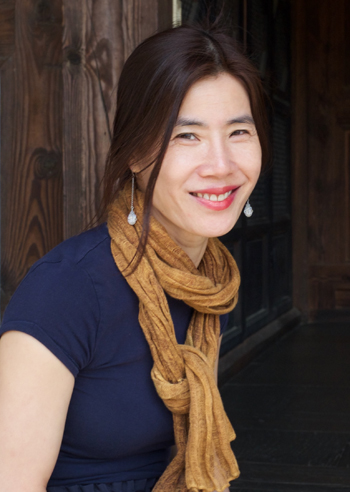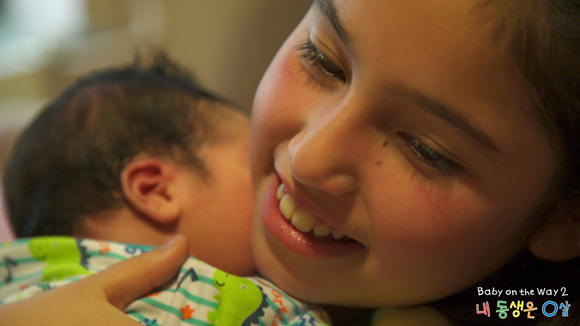Doc teaches kids about family : In ‘Baby on the Way 2,’ children learn to cope with new siblings

Chung Hyun-sook, the senior executive producer at EBS Children’s Media, worked on the second season of “Baby on the Way,” a rare locally-made documentary produced for children. [EBS]
Jointly created by producers from six countries - Korea, Italy, Chile, Cambodia, Thailand, and Vietnam - the documentary highlights how children between seven to nine learn to socialize within multi-sibling families from the child’s point of view.

Nine-year-old Tania from Chile holds her new sibling in a scene from the new season of “Baby on the Way.” [EBS]
In the Korean episode, “Welcome to My Room,” for example, eight-year-old Seo-an learns to become a mature sister to her three younger sisters. Although she initially describes her sister as a “fly” for bothering her so much, Seo-an gradually learns to take care of her younger siblings.
To discuss in-depth the new season, which will air on Thursday and Friday at 7 p.m. this week and next week, Chung sat for an interiew with the Korea JoongAng Daily on Wednesday. Below are the edited excerpts.
Q. What drove you to design a documentary for children, and what message did you wish to deliver?
A. I believe ideas come from your daily routine. For me, I have been wondering how to create a better society for children. Children grow up within a family, and I hope to give them a chance to think about their roles as members of the family, which is the foundation of society. I believe this documentary will provide viewers with a chance to see themselves [from a different perspective]. In terms of the target audience, I chose elementary school students in lower grades because that is the age when they can start speaking out their thoughts.
What inspired you to feature such diverse nationalities?
The most crucial value that I have kept in my heart while working in this field for longer than 10 years is accepting other people’s differences. In the famous classic “Pride and Prejudice,” pride is actually a good element. However, if pride becomes too strong, people naturally tend to look down on others that are not able to meet up with their standards. For example, when I showed the second season’s Cambodian episode to a group of first and the second grade elementary students, their first response before seeing the video was to unconsciously [belittle the country] as a developing nation. Their [ignorant] tone got me very worried, and led me to think that they need to learn to coexist [as society members]. Everybody is different. Children need to learn to accept and respect those differences. I believe prejudice is the biggest factor that harms the organizational culture.
Although each episode is short, it seems to have taken a lot of time to complete the entire documentary. How long did it take to complete and why did it take so long?
Not counting the planning stage, it took around six months to shoot and edit the entire documentary. It took quite a long time to make children act naturally in front of cameras. It was especially difficult to feature children that weren’t used to being exposed to cameras. Since children want to only display the best sides of themselves, they tend to act unnaturally at first. So the first parts of the filming all go to waste.
However, as time passes, they reach a certain point, when they forget about being filmed by cameras. That happens when they are preoccupied with doing something they love such as riding a bike and playing games. We just have to be patient until we reach that point.
The documentary’s first season’s Mongolian episode won the Japan Foundation President Prize at the international award competition hosted by NHK. Do you have plans to make more seasons?
Although nothing has been perfectly confirmed, it is likely that a third season will come out. While finalizing the second season, I got a call from the Guangzhou International Documentary Film Festival. The organization said that they want to invest in our documentary, and we signed a MOU.
For the next project, I wish to depict adults’ stories that children can understand instead of depicting children’s stories for children as we have already been doing. For example, “My Love, Don’t Cross That River”, [a heart-wrenching documentary featuring the love of an elderly couple], also gained sympathy from young people even while portraying an elderly couple.
Family is the basic component of society that all people can sympathize with. Another idea I have in mind is depicting social family (people befriended in the society) instead of merely focusing on biological family. I also wish to include more diverse nations such as those in Africa and northern Europe.
BY JIN MIN-JI [jin.minji@joongang.co.kr]










with the Korea JoongAng Daily
To write comments, please log in to one of the accounts.
Standards Board Policy (0/250자)